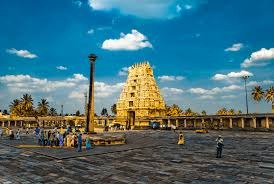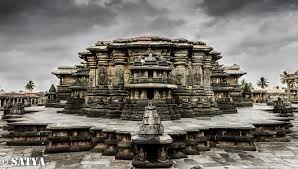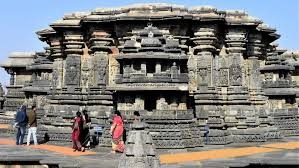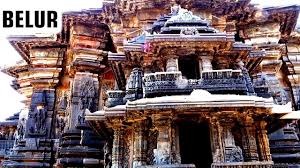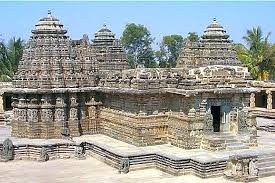In the picturesque town of Belur, Karnataka, the Chennakesava Temple stands as a shining example of Hoysala architectural brilliance and religious devotion. Dedicated to Lord Vishnu, this ancient temple, built in the 12th century, captivates visitors with its intricate carvings, elegant design, and rich historical significance. Whether you’re an architecture enthusiast, a history buff, or a spiritual seeker, a visit to the Chennakesava Temple promises an unforgettable experience.
Historical Significance
Constructed during the reign of King Vishnuvardhana of the Hoysala dynasty, the Chennakesava Temple was built to commemorate the king’s military victories and celebrate his devotion to Lord Vishnu. It is named after the deity it houses, Chennakesava, a form of Vishnu, with “Chenna” meaning “handsome” and “Kesha” referring to “hair” or “locks,” symbolizing the deity’s divine beauty.
Architectural Marvel
The Chennakesava Temple is renowned for its exquisite Hoysala architecture, characterized by intricate carvings, detailed sculptures, and a unique star-shaped plan. Here are some key features that highlight the temple’s architectural splendor:
Intricate Carvings and Sculptures
The temple’s walls, pillars, and ceilings are adorned with elaborate carvings depicting scenes from Hindu mythology, including various deities, celestial beings, and epic tales from the Ramayana and Mahabharata. The level of detail and craftsmanship in these sculptures reflects the artistic prowess of the Hoysala artisans.
Star-Shaped Base
The temple’s distinctive star-shaped base is a hallmark of Hoysala architecture. This design not only adds to the temple’s aesthetic appeal but also enhances its stability. The star-shaped plan is complemented by a richly decorated central dome, creating a visually stunning effect.
The Pillared Hall
One of the most impressive aspects of the Chennakesava Temple is its pillared hall, known for its intricately carved pillars. Each pillar is unique, showcasing elaborate patterns and sculptures that highlight the exceptional skill of the craftsmen. The pillars support the temple’s ceiling, which is adorned with more intricate carvings.
Gopurams (Gateway Towers)
The temple features ornate gopurams, or gateway towers, that serve as entrances to the temple complex. These towers are intricately carved with depictions of deities and mythological scenes, adding to the temple’s grandeur and inviting visitors into its sacred space.
Spiritual and Cultural Importance
The Chennakesava Temple continues to be a vibrant center of worship and spiritual practice. Devotees visit the temple to seek blessings from Lord Vishnu, and the temple’s serene ambiance provides a peaceful setting for prayer and reflection. The temple’s cultural significance is further highlighted by its role in various festivals and religious ceremonies.
Exploring Belur: Nearby Attractions
While the Chennakesava Temple is a major highlight, Belur is home to several other attractions that enhance your visit:
-
Hoysaleswara Temple: Located in nearby Halebidu, this temple is another masterpiece of Hoysala architecture, featuring stunning carvings and a similar architectural style.
-
Yagachi River: The scenic river near Belur offers opportunities for leisurely boat rides and relaxation, adding a natural charm to your visit.
-
Local Markets: Explore Belur’s local markets for traditional crafts, textiles, and souvenirs that reflect the region’s cultural heritage.
Practical Tips for Visitors
-
Best Time to Visit: The ideal time to visit Belur is between October and March when the weather is cooler and more comfortable for sightseeing.
-
Dress Code: As the Chennakesava Temple is a sacred site, modest attire is recommended. Ensure that shoulders and knees are covered.
-
Guided Tours: Consider hiring a local guide to gain deeper insights into the temple’s history and the significance of its intricate carvings.
-
Respect Local Customs: Follow temple guidelines and maintain a respectful demeanor while exploring the temple complex.
Conclusion
The Chennakesava Temple in Belur is a testament to the artistic and architectural genius of the Hoysala dynasty. Its intricate carvings, unique design, and serene atmosphere make it a must-visit destination for anyone interested in exploring India’s rich cultural and religious heritage. As you wander through the temple’s ornate corridors and admire its stunning sculptures, you’ll gain a profound appreciation for the timeless beauty and spiritual significance of this architectural gem.


